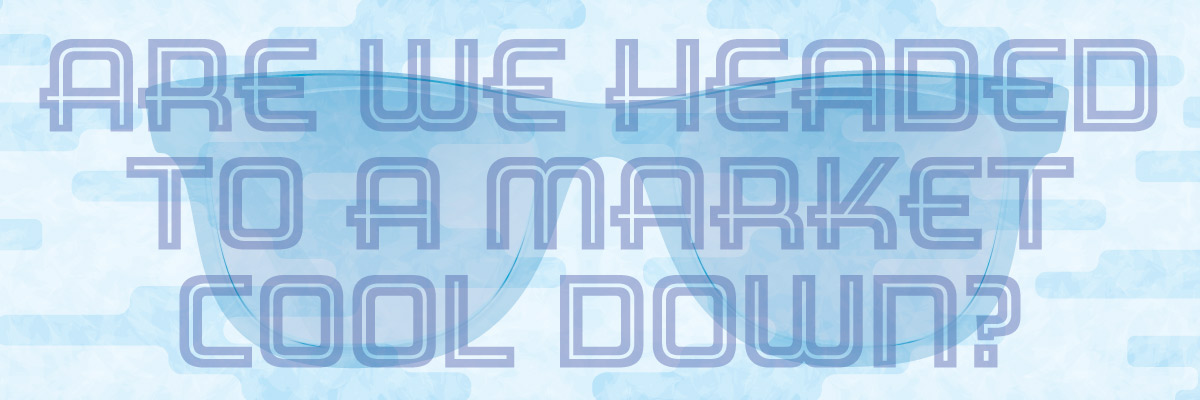Are We Headed for a Market Cooldown?
May 3, 2021
 Since last summer, the housing market has been running at breakneck speed. In housing markets across the country, including here in Virginia, homes are selling incredibly fast, multiple offers and bidding wars have become the norm, and the housing shortage is getting even more severe. The Case Shiller index, which is a measure of national home prices, posted its highest level since 2006, 15 years ago. Median prices in Virginia have been rising at near-double digit rates for eight months.
Since last summer, the housing market has been running at breakneck speed. In housing markets across the country, including here in Virginia, homes are selling incredibly fast, multiple offers and bidding wars have become the norm, and the housing shortage is getting even more severe. The Case Shiller index, which is a measure of national home prices, posted its highest level since 2006, 15 years ago. Median prices in Virginia have been rising at near-double digit rates for eight months.
The last time the housing market looked this frenzied was back in 2005 to 2007, and we all remember the disastrous outcome.
This housing market is much different than the one we had 15 years ago. The underlying fundamentals of strong, demographically driven demand and extremely low inventory are pushing prices up. A housing bubble occurs when prices escalate beyond what can be explained by the underlying fundamentals.
No Pop, But What About a Cooldown?
While we are not in a traditional housing bubble, the dramatic housing market of the past eight months cannot be sustained over the long term. There are at least three reasons to expect the market will cool down:
- Eventually, new construction will begin to accelerate and add to the inventory. Right now, Freddie Mac has estimated that we have a 8 million housing shortfall. New construction will reduce that shortfall—a little—which will ease the demand-supply balance. A little.
- Mortgage rates will rise slightly which could cool demand. While it is likely that mortgage rates will remain at historically low levels, certainly under 4% through 2021, a slight increase could push marginal home buyers out of the market.
- The most likely reason we’ll see a slowdown is affordability. Rising home prices will put homeownership out of reach for some segments of the population, even if rates don’t rise. As a result, some prospective home buyers are deciding to put off buying a home altogether.
Another reason we might see a slowdown in the housing market? Perhaps paradoxically, the improving economy will lead to a slight pullback in demand. The availability of the COVID-19 vaccine and the end of the economic downturn will allow people to do things they haven’t done in a year—travel, go to restaurants, plan weddings, have babies, and work outside the home, among other things. As a result, people won’t be stuck staring at their four walls and will have other things on which to spend their money.
How to Manage Expectations
The heart-pumping housing market frenzy could die down—at least a little—in the coming months as more sellers list their properties and inventory slowly increases. About 10% of current homeowners plan to put their homes on the market this year—and more than half are more affordably priced, according to an exclusive survey conducted by realtor.com®. An additional 16% expect to list their properties within the next two to three years.
Typically, only about 8% of homeowners put their homes up for sale each year. This is about a 25% anticipated increase, which translates into about 1.5 million more homes. The increase may be due to folks holding off on selling their homes during the worst of the coronavirus pandemic.
By the numbers, however, it’s becoming harder and harder to argue that America’s housing market isn’t already over-heating.
Wealthy buyers continue to snatch up second and third homes (or more) as investments. This has created a “shadow inventory” of millions of homes that never hit the market because it makes more financial sense for owners to hold than sell as long as prices continue to outpace carrying costs (which, in most market cases, they still do).
Then, there are other externalizing factors that don’t get the headlines but are also moving the needle, like technology—including online listing platforms, digital mortgage approvals, and virtual closings—which has fast-forwarded the speed at which homes are marketed and sold, particularly during the recent pandemic, in turn artificially hastening the pace at which demand is outstripping supply.
In the fourth quarter of 2021, NAR Chief Economist Lawrence Yun predicts the volume of U.S. home sales to drop 10% compared to the year-ago period, as mortgage rates climb closer to 3.5%, up from about 2.7% at the start of 2021.
Yun also expects home prices to keep rising in the short term, because of more than a decade of sluggish housing construction, hobbled by restrictive zoning and high labor costs.
Click here to send any comments or questions about this piece to Virginia REALTORS® Chief Economist Lisa Sturtevant, PhD.
*Information as of 05/03/21
You might also like…
RESPA & Joint Ventures: What Is Allowed?
By Laura M. Murray - March 6, 2023
We have heard reports that state Attorneys General may be taking an increased interest in certain joint venture arrangements between real estate licensees and settlement companies. Agents may… Read More
DPOR Update: Death or Disability of a Broker
By Laura M. Murray - December 5, 2022
In the 2022 Session, the General Assembly passed a law updating what happens in the event of the death or disability of a sole proprietor or sole broker… Read More
What Do Federal Reserve Rate Hikes Mean for the Housing Market and for Your Business?
By Dr. Lisa Sturtevant - April 4, 2022
In March, the Federal Reserve raised the short-term federal funds rate by 0.25 percentage points. This rate hike was the first time the Fed has raised rates since… Read More